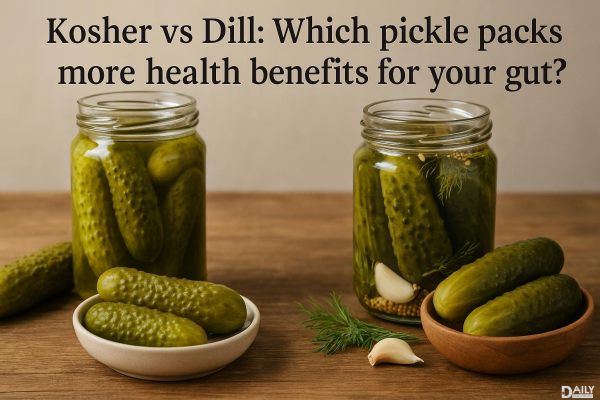Whether you're a sashimi lover or Whole Foods California roll die-hard (hey, same!), sushi has earned a place on many people's favorite foods list. It's fresh, flavorful, and a birthday dinner classic. But between rolls, you may have occasionally wondered: is sushi actually good for you?
In short, yes. Sushi can absolutely be a healthy addition to your diet, says Claire Rifkin, RDN, a registered dietitian and founder of Claire Rifkin Nutrition. Not only is it minimally processed, filling, and delicious, but it's packed with omega-3 fatty acids, protein, and healthy vitamins and minerals, she says.
However, the exact health benefits and nutritional advantages of sushi can greatly vary depending on the type you order. So it's important to be mindful about what ingredients are worth prioritizing, and how often you eat the dish.
The Nutritional Breakdown of Sushi
Sushi is a dish typically consisting of seaweed, rice, vegetables, and raw or cooked fish, paired with flavor-boosting sides such as soy sauce, wasabi, and/or ginger, says Katie Janeczek, RDN, a registered dietitian at Ciba Health. The meal originated in Japan and has become a worldwide favorite thanks to the fresh ingredients and bold flavors.
One of the best parts about sushi is that there are endless types, variations, and styles, but that also means it's hard to give the exact nutritional information. In general, though, Janeczek says sushi provides a balanced meal since it's packed with protein from the seafood, fiber from the vegetables, and carbohydrates from the rice.
Ultimately, it comes down to the specific roll you order. For example, a California roll (per two to three pieces) contains about 175 calories, 7 grams of protein, 17 grams of carbohydrates, and 7 grams of fat. Meanwhile, a shrimp tempura roll (same serving size) has roughly 175 calories, 4 grams of protein, 28 grams of carbs, and 6 grams of fat. An avocado roll, on the other hand, is lighter at 140 calories, 2 grams of protein, 25 grams of carbs, and 7 grams of fat per serving.
But again, the nutrition of sushi can vary significantly depending on what you order. For example, a piece of nigiri with just fish and rice will have less dietary fat and calories than a sushi roll made with fried tempura and spicy mayo, says Rifkin.
Why Sushi Deserves a Spot in Your Diet
Thanks to the fish content, sushi can be a great source of lean protein, which is essential for muscle repair, growth, and overall body function, says Rifkin. The protein also makes sushi a satiating meal or snack and can help keep you full for several hours, Janeczek adds.
Omega-3 fatty acids are key for supporting heart health and brain function, and sushi made with tuna or salmon can be a great way to boost your intake, Rifkin says. Plus, non-fried sushi made without mayo-based sauces is low in saturated fat, which makes it another good option for heart-healthy eating.
Depending on what the sushi is made from, it can provide a plethora of essential vitamins and minerals, which are key for supporting your overall health and bodily functions, Rifkin says. "For example, fish contains vitamin D, which supports immune function; seaweed contains iodine, which supports thyroid health; and vegetables like bok choy contain magnesium, which contributes to bone density."
The wasabi and ginger that are often served with sushi contain antioxidants, which can help lower inflammation and reduce oxidative stress in our bodies, says Rifkin. While you may not eat enough of the sides to make a big impact, research also shows the omega-3 fatty acids in sushi can help reduce chronic inflammation, which is key for minimizing the risk of cancer, diabetes, and heart disease.
How to Make Sushi Even Healthier
If you're looking to maximize the health benefits, Rifkin says to look for options like salmon or tuna sashimi, which are high in protein and healthy fats, and pair it with vegetable-based rolls or a side of edamame or seaweed salad for added fiber. On the flip side, it's best to limit your intake of fried tempura rolls since they're high in saturated fat (the type of fat you generally want to limit in your diet), adds Janeczek.
Generally, home-cooked meals are better for you than ordering out but since sushi-making is a skill that can be tough to master, Rifkin recommends this simple do-it-yourself alternative: a poke bowl made with brown rice, cooked salmon pieces (it's better to used cooked fish at home to limit the risk of foodborne illness), seaweed, avocado, and vegetables with a sesame-based dressing.
How Often Should You Eat Sushi?
"While sushi can be a healthy option, I wouldn't recommend eating it every day since some fish, like tuna, can contain high levels of mercury. Consuming them frequently could lead to mercury buildup," Rifkin says. And though rare when eating out, raw or undercooked seafood does pose a risk for parasites and bacterial disease, Janeczek says.
Instead, Janeczek says it's best to enjoy sushi in moderation, or around one to two times a week, and incorporate a variety of fresh, whole foods for a well-rounded and balanced diet.
Yes, sushi absolutely can be a healthy choice, especially when it includes ingredients like lean fish and vegetables, Rifkin says. "The combination of protein, healthy fats, and micronutrients makes it a nutritious option, just be mindful of ingredients that can increase unhealthy fats, like fried tempura or mayo-based sauces, and potentially high sodium intake from soy sauce."
You should also only eat sushi from a reputable restaurant or supplier to reduce the risk of contamination or foodborne illness since raw fish can contain parasites or harmful bacteria when not properly prepared, notes Rifkin. Additionally, pregnant people may want to avoid sushi with raw fish to mitigate any risk of bacterial contamination that can harm fetal development, says Janeczek.
























